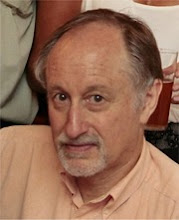On the Learning Circuits Blog, Clark Aldrich posted an article on the importance of honesty in training design. He then suggested some practical methods for homing in on the truth. Let's call his approach "objective". It is valuable but I think limited by a cultural bias in favor of facts and procedures accompanied by a certain "benign neglect" of affective reality. To build a more accurate and complete picture of training needs, I believe Clark's suggestions should be completed by an approach that takes subjectivity into account.
The basis of such an approach should not be limited to questions of appreciation and reactions to training methods and content, nor should it focus on the now traditional distinctions of "learning styles". I propose using a more fundamental cultural concept: identity. This means how individuals engaged in learning something feel about who they are and the image they project in social and professional contexts. These feelings are elaborated largely at the unconscious level. For that reason, polling people about the effects of learning will produce only a very partial picture of what has occurred. As in all cultural questions, it's less what you know than how you spontaneously interact with others in real situations that define competency.
Going beyond Clark's suggestion, let me relate the initial experience that led me to define an approach that focuses on the subjective and this question of identity. This was my very first complete project building a multimedia learning module.
In 1986, I was put in charge of developing an interactive video program for helicopter maintenance. As project manager my first task was to begin working with the training team to understand the nature of the problem to be addressed. The subject was the most complex and delicate chapter of a five week course for certification in helicopter maintenance: "flight control rigging". The trainer I was working with started off by explaining to me what the team usually taught, step by step. As the whole thing was a foreign language to me (with terms like "clinometer", "collective pitch", "geometrical precession"), after a very short time I stopped him in his tracks and looked for another angle of approach. I simply asked "who are the learners?" After the usual superficial description (work experience, educational background, social class, etc.) I asked, "and who will they be after the training, on the Monday following the final Friday of the final week of the course course?" The trainer had to think long and hard, straining his imagination to encompass events he had never really thought about. I refined the questioning. "Why did they enrol in the course? What did they feel about themselves and who they were when they made the decision?" He began reviewing the hundreds cases he and the other trainers knew but had never tried to analyse. He was quickly able to propose a typology of learner profiles that turned out to be extremely varied and that helped to define the challenge that lay ahead of us: addressing their common and particular needs.
I then continued by asking "how will they feel about themselves when apply for a job with their new qualification and confront a prospective employer?" As the trainer's imagination was already activited, possible answers began to appear, with a vision of the likely behaviour of the newly certified mechanics. But it didn't stop there: "how will they talk and think about themselves at a cocktail party or a dinner with friends? What will have changed in their idea of themselves?" By asking these questions, we could begin focusing on the unconscious side of professional identity, including, "in what voice do I authorize myself to speak to others?" The answers given by the trainer were far from complete case studies, but they gave me enough to go on to make some fundamental design decisions.
The trainer had never considered any of these questions because his job started on the morning of the first Monday of the five week course and ended on the afternoon of the last Friday. That's all he's was paid for (in addition, he had his Wednesday afternoon off for golf!). Asking these questions and listening to the trainer's replies enabled me to work with him productively on building the contents that addressed the issue of how the learner's identity could be constructed. One of the key decisions I made was to include a character played by a mime, representing both a learner (he was discovering a new world) and a mechanic (he quickly transformed knowledge into physical gesture). Moulding a learner's identity requires providing models of both learning and practice to work from. Another technique that proved useful was to oblige the trainer to draw what he saw as visually useful for each new learning point in the course, rather than to explain it in purely linear verbal terms. After that we could talk about questions of learner perception and relationships between ideas, principles, objects. This was fundamental for a project built around video, but I submit that it is equally useful for any document that aims at teaching or training.
The initial tests of the product with actual learners proved to be very positive. As shortly after the completion of the project I left the company (which, though part of the powerful Thomson group, itself had serious problems at the time) I'm not sure about the long term effects of this project on the learners, but I can say it was perhaps the greatest learning experience I've ever had!
Wednesday, February 08, 2006
Subscribe to:
Post Comments (Atom)

1 comment:
This links strongly with Etienne Wenger's discourse on Identity within his text Communities of Practice - Learning, Meaning & Identity (1998). I would agree that identity is more than the image that an individual projects - that is is the core of the learner and that which develops as a result of learning taking place.
Post a Comment